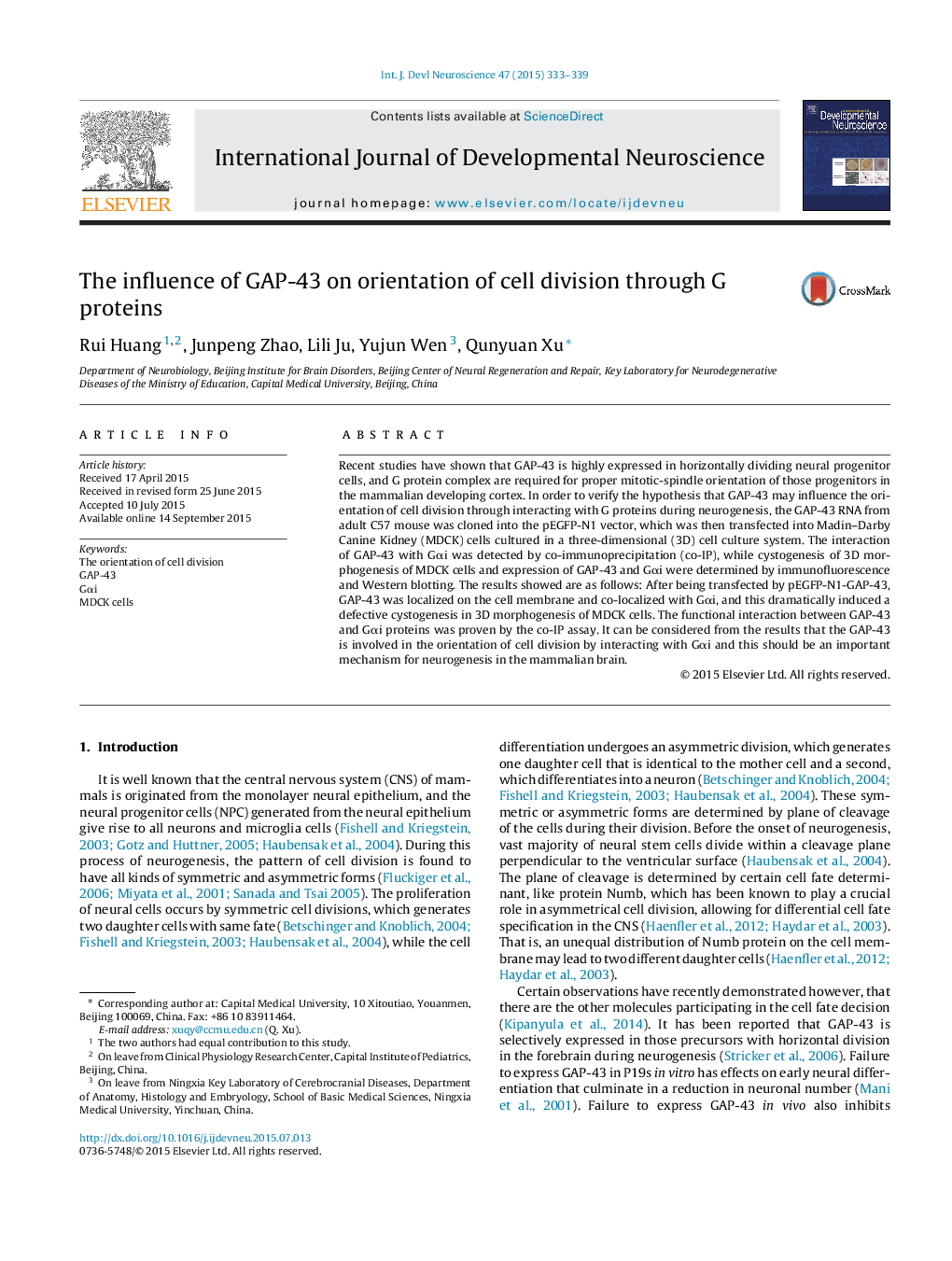| Article ID | Journal | Published Year | Pages | File Type |
|---|---|---|---|---|
| 2785661 | International Journal of Developmental Neuroscience | 2015 | 7 Pages |
•The GAP-43 had an influence on the orientation of cell division, determined by cystogenesis in 3D morphogenesis of MDCK cells.•The influence of GAP-43 was through its interaction with protein Gαi.•The results may explain a role of GAP-43 in neurogenesis.
Recent studies have shown that GAP-43 is highly expressed in horizontally dividing neural progenitor cells, and G protein complex are required for proper mitotic-spindle orientation of those progenitors in the mammalian developing cortex. In order to verify the hypothesis that GAP-43 may influence the orientation of cell division through interacting with G proteins during neurogenesis, the GAP-43 RNA from adult C57 mouse was cloned into the pEGFP-N1 vector, which was then transfected into Madin–Darby Canine Kidney (MDCK) cells cultured in a three-dimensional (3D) cell culture system. The interaction of GAP-43 with Gαi was detected by co-immunoprecipitation (co-IP), while cystogenesis of 3D morphogenesis of MDCK cells and expression of GAP-43 and Gαi were determined by immunofluorescence and Western blotting. The results showed are as follows: After being transfected by pEGFP-N1-GAP-43, GAP-43 was localized on the cell membrane and co-localized with Gαi, and this dramatically induced a defective cystogenesis in 3D morphogenesis of MDCK cells. The functional interaction between GAP-43 and Gαi proteins was proven by the co-IP assay. It can be considered from the results that the GAP-43 is involved in the orientation of cell division by interacting with Gαi and this should be an important mechanism for neurogenesis in the mammalian brain.
